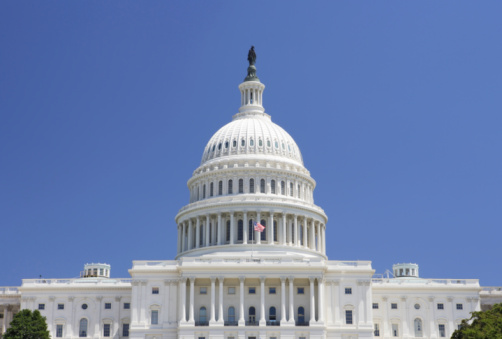The best part of any budget is the part in which its architects forecast what will happen years into the future. Nations, companies and nonprofits have five-year plans. Most of these plans are not worth the paper they are written on because the number of variables increase as the years of the forecasts extend well ahead of the present. That, in short, is what makes the Congressional Budget Office forecast for the U.S. economy and debt so absurd.
The CBO forecast is for a period of much longer than five years. Its guesses extend for 10. It assumes that the deficit will shrink to $845 billion this year, and because it is for this year, the figure is believable. The forecast that unemployment will be above 7.5% into next year probably is solid as well, based on the number of jobs the economy adds month in and month out, and has for the last year.
The part of the CBO projection that politicians and the media seized on was this:
Deficits are projected to increase later in the coming decade, however, because of the pressures of an aging population, rising health care costs, an expansion of federal subsidies for health insurance, and growing interest payments on federal debt. As a result, federal debt held by the public is projected to remain historically high relative to the size of the economy for the next decade. By 2023, if current laws remain in place, debt will equal 77 percent of GDP and be on an upward path, CBO projects.
The word most frequently used in the CBO summary of its forecasts is “if.” If the population ages, costs will rise. If health care costs rise, so will the deficit. But those “ifs” may not come true at all, particularly because several demographic and political trends are in place or are about to be.
The aging population has begun to work for longer, as people with inadequate retirement funds remain employed into their 70s or even their 80s. These people will pay taxes for periods never seen before, and potential cuts in Social Security would guarantee that. The aging population does not become “old” as fast as it used to, as some portion of these people take better care of themselves, or avoid doctors altogether because they cannot afford visits or treatment. A drop in demand for medical care might even start to erode the rise in medical costs.
The cost of interest on federal borrowing depends on the rates paid along with the amount borrowed. The Treasury has been able to borrow at rates that are so low they have set records. Those rates may remain low if a volatile world economy and the breakdown of finances in places like Europe causes an ongoing “flight to safety,” with that safety often being American sovereign paper.
The hardest portions of the forecast to believe are those which extend beyond 2020.
For the second half of the coming decade, CBO does not attempt to predict the cyclical ups and downs of the economy; rather, CBO assumes that GDP will stay at its maximum sustainable level. On that basis, CBO projects that both actual and potential real GDP will grow at an average rate of 2¼ percent a year between 2019 and 2023.
However, without a prediction of those “cyclical ups and down” any projection is useless, and not worth the paper it is written on.
Credit Card Companies Are Doing Something Nuts
Credit card companies are at war. The biggest issuers are handing out free rewards and benefits to win the best customers.
It’s possible to find cards paying unlimited 1.5%, 2%, and even more today. That’s free money for qualified borrowers, and the type of thing that would be crazy to pass up. Those rewards can add up to thousands of dollars every year in free money, and include other benefits as well.
We’ve assembled some of the best credit cards for users today. Don’t miss these offers because they won’t be this good forever.
Flywheel Publishing has partnered with CardRatings for our coverage of credit card products. Flywheel Publishing and CardRatings may receive a commission from card issuers.
Thank you for reading! Have some feedback for us?
Contact the 24/7 Wall St. editorial team.




